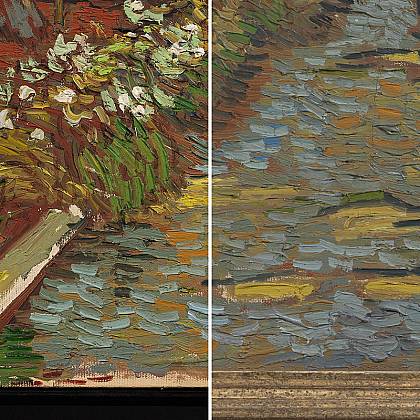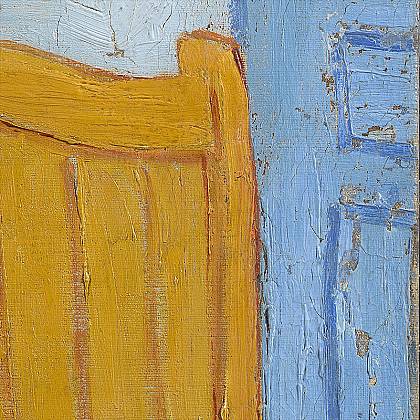Covered by tape
The Bedroom
When The Bedroom was restored, old retouching (overpainting) was removed and replaced with new retouching. The X-ray image shows that there were old retouches in the floor, in exactly the places where the paint had once flaked off.
Surprisingly, their colours did not match the rest of the floor. Yet this was no mistake. The peach colour of the old retouching was very similar to a strip of colour that the conservator found at the bottom of the painting.
The paint there had been covered with tape for decades. Because it was protected from light, its colour did not change as much. This shows that the old retouching must have been a good match for the original soft red colour of Van Gogh’s floor.
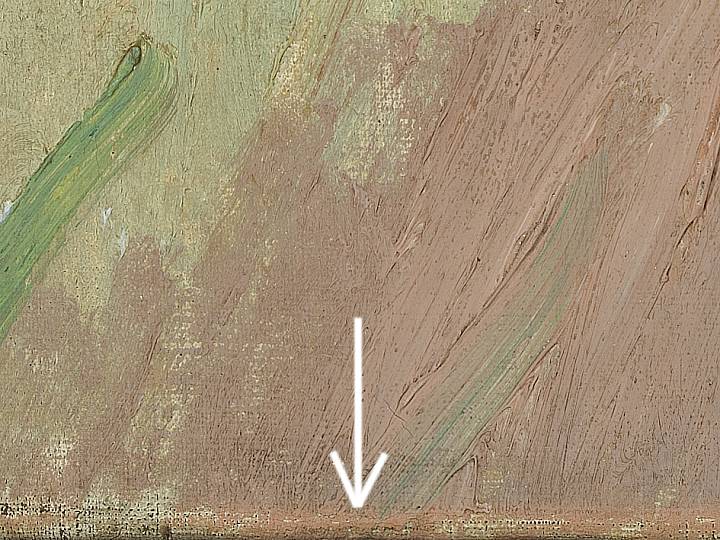
Peach-coloured strip along the bottom of the painting. The original colour has been preserved here because no light could reach it.
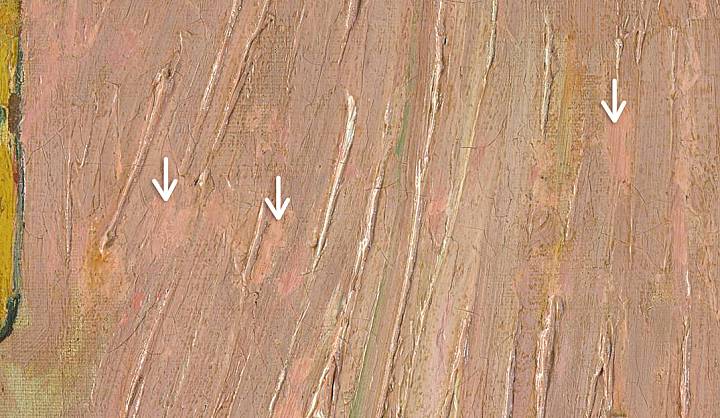
Old retouching from 1931/32, which no longer matched the colour of the surrounding paint.
Discoloured
To check whether parts of the painting really had changed colour, scientists studied the paint. They found the cause of the discolouration: eosin. This synthetic dye came onto the market in the late 19th century. Van Gogh knew that light made this red dye fade, but he liked to use it anyway.
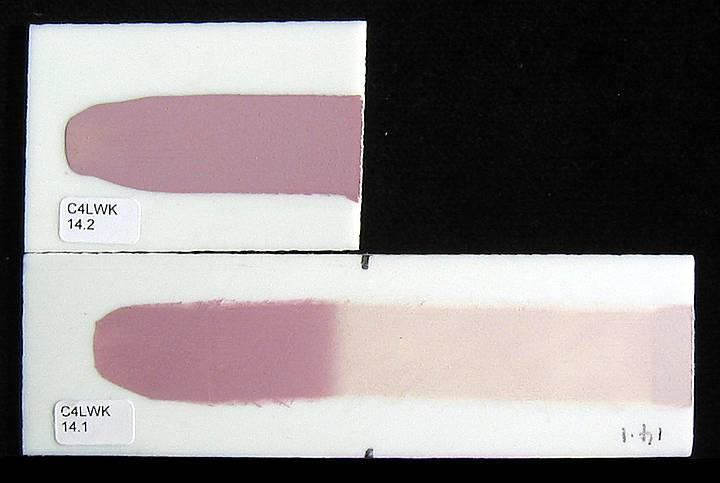
Researchers made their own red paint with eosin. The stroke of eosin-based paint in this reconstruction was artificially aged. They discovered that the red colour nearly vanishes within a decade.
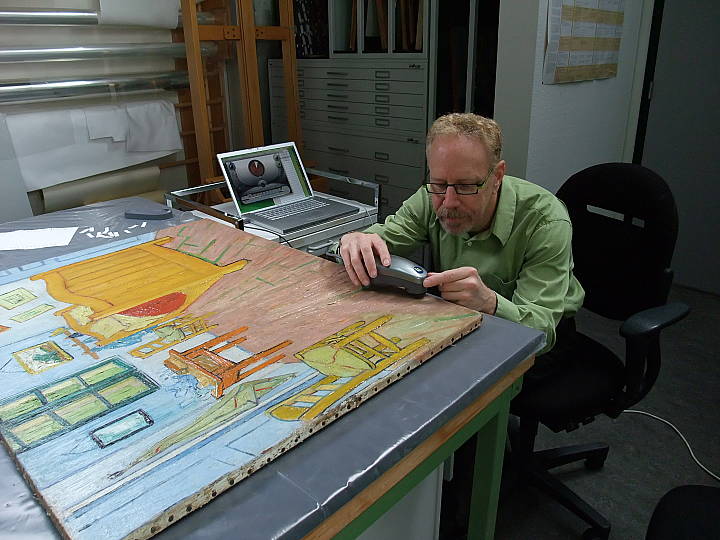
The colour reconstruction was made by Roy Berns,
Munsell Color Science Laboratory,
Rochester Institute of Technology, U.S.A.
